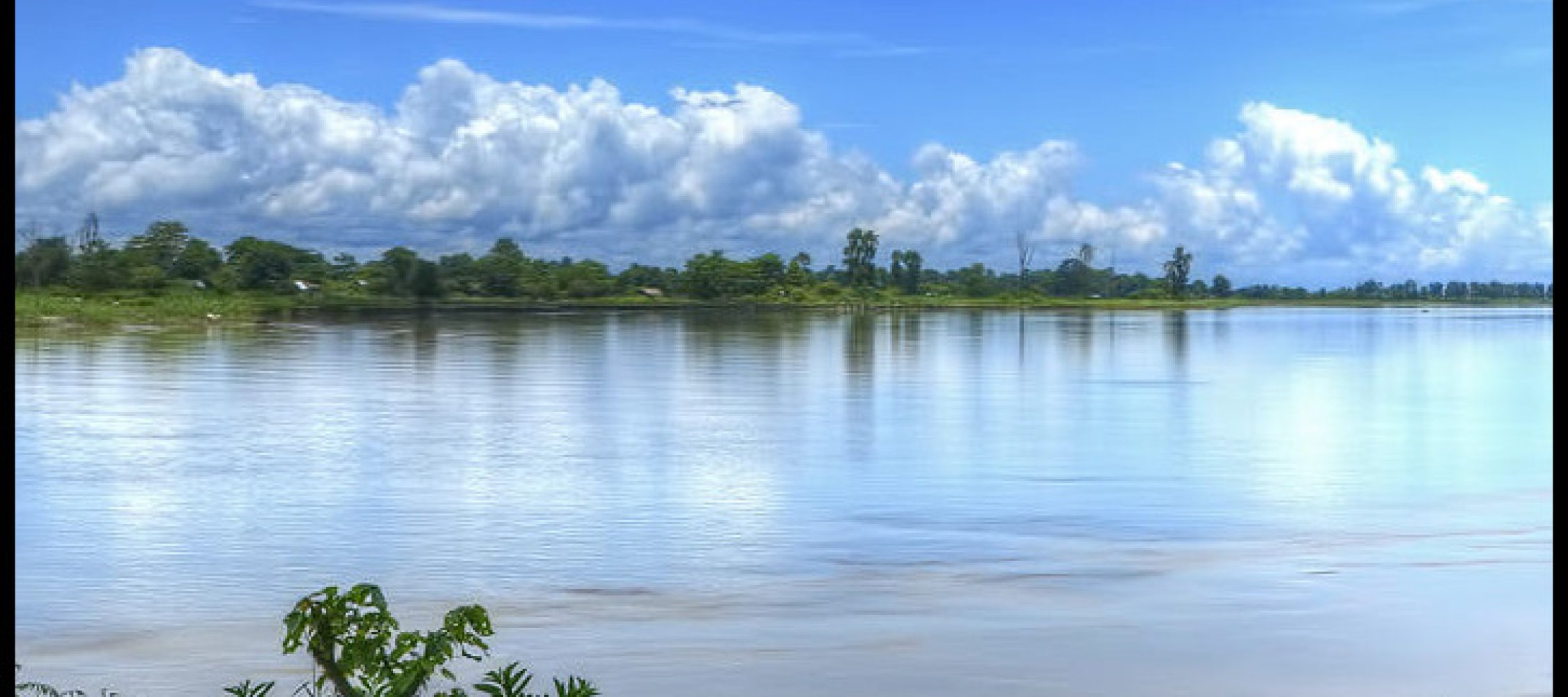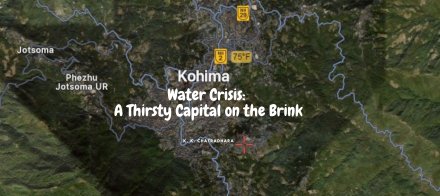 |
Raginee Bora, a student of, CBA 1st Semester, D.C.B. Girls College, with her viewpoint on the Disang River (Assam) through his participation in the online essay competition, which was curated by Parthana Arandhara (Water Fellow-NEWT 2000)
“Binds of a Feather Flock Together?”
“Disang - A carpet which unfolds sweetness
who echoes the secrets of nature
Carries God's blessings in disguise
Speaks heart's news
Disang - Life's shower ... “
The Almighty embellished the world with utter amazement. Hills, plains, rivers, streams, forests, grasslands, etc, care nature's beauty queen. A novel scene of nature is the beautiful flowing rivers. Splitting, the heart of Dehing Patkal hills, travelling to different cities and villages, it takes shelter in the heart of the mighty Brahmaputra, it is none other than the river Disang, It originates at an elevation of 2,200 metres in the Tirap district of Arunachal Pradesh. The river is known as Sisa at its source, Dilli in the middle part Disang in its lower part. The length of the master river Disang in Arunachal Pradesh is 65.50 km, while the length in Assam is 187.50 km.
The river Disang has its two distinct sections on the basis of topography and river gradient, i.e. the hilly portion and the plain portion. The Disang river from its source covers a hilly tract in the Patkai hill ranges of Arunachal Pradesh and a plain part in Assam. The length of the hilly portion is 65.50 km. the river, which is known as the Visa here, flows in the north – south direction throughout the entire hilly area. All the left and right bank tributary streams in the hills form an efficient drainage system in Arunachal Pradesh, Nagaland and Assam. The plain portion of the Disang river extends from the Dieli tea garden in Namrup (Assam) to the Disangmukh live. The confluence of this Disang with the Brahmaputra) with an axial length of 187.50 km. These are altogether six major tributary streams meeting the Disang river in its plain portion. These are timan river, Yawkak river, Safrai river, Diroi river, Diman river and Balana River, etc.
The Disang river basin covers an area of 3845.98 kms out of which an area of 2009.01 km is in the plains and hills of Dibrugash and Sivasagar districts of Assam. The remaining area of 1836.97 km lies in the hills of Sirap and Mon districts of Arunachal Pradesh and Nagaland respectively.
Water is life's matter and matrix, mother and medium, there is no life without water? But are we following our responsibility to protect it from getting polluted? The length of the polluted stretch of Disang river at Gudam ghat is 2.9 km (approx.) with an area of 1.3 sq. km. The stretch identified as polluted is from Kechanuguri No. 1 to Kechauguri No. 3 in Sivasagar District.
Human beings are the main factors of pollution. Water pollution results when contaminants are introduced into these water bodies. It reduces the ability of the body of water to provide the ecosystem services that it would otherwise provide. It can also lead to water-borne diseases for people using polluted water for drinking, bathing, washing or irrigation. All plants and organisms living in or being exposed to polluted water bodies can be impacted. The effects can damage individual species and impact the natural biological communities they are part of.
Disang river can be conserved before it's too late. While it may be difficult for one or two but for a community as whole, it can be possible for sure. It is rightly said that when people work together, any impossible looking task can achieve success. When people will live by the quote: Stop Pollution Quick, Don't Make the water sick', the river will be made pollution free and conservation will climb the stairs of success. Disang river conservation can be successful when public awareness is of utmost importance. Community participation plays a significant role. Unless the public are made aware about the irreversible damage and pollution caused by indiscriminate littering and dumping of waste and garbage in drains and water bodies connected to Disang River, the word conservation? Cannot be achieved in true sense. Some members of the communities are already aware that there is a need for a river conservation programme and that they will be benefitted. Others must be made realised the same.
Laying the Groundwork: Lead by example. Awareness for community participation can be made through education and awareness programmes. Practice what you preach. To convince anyone, we must start it from ourselves. A river can bring changes to human civilisation. Human civilisation began on the banks of a river. People's social, economic, cultural life is related to rivers. Disang river is no exception to it. It is the role of the community to conserve all these.
To combat erosion and conservation, the community can raise a plantation along the river bank to control the flow of run off water directly to the river. Bamboo species to be raised as it is the bank's good soil binder, thereby stabilizing of the river from erosion.
Disangmukh, the place where the Brahmaputra and Disang join together, is also an ultimate destination for tourists to have a close look at the by Mising community people, one of the colorful communities of Assam. This place is situated almost 10 km from Sivasagar town. The scope of tourism can be expanded by including people of different communities, which will also enhance togetherness among them and play a positive role in conversation.
For all nature lovers, Disangmukh is of the famous tourist spots. It becomes quite an exotic experience to picnic at" Disang Sapori " surrounded by flowing mater of Siang crossing by joined river boats to of two to three small boats during season, i.e., December to February. The best time to visit the place is winter, when have a look at you can the migratory birds as well. Visitors also have a chance to see the river dolphins of Brahmaputra here, whose population is decreasing rapidly. Awareness regarding conservation can be made significant when, people visit the location themselves. Community participation in this regard can play this effective role.
The members of communities can play an effective role in approaching the Govt. regarding conservation of river Disang. In compliance with the direction of Hon'ble National Green Tribunal, Principal Bench, New Delhi in the matter of news published in" The Hindu” authored by Jacob Koshy Titled “More river stretches are now critically polluted CPCB' Government of Assam constituted River Rejuvenation Committee (CRRC) vide memorandum 673/2018 dated 19/12/2018 for effective abatement of pollution, rejuvenation, protection and management of the identified polluted stretches, for bringing the polluted river stretches to be fit at least for bathing purposes within six months:
The action plan for rejuvenation, protection and management of identified polluted river stretch of Assam has been prepared based on the following:
* As per direction of Hon'ble National Green Tribunal, Principal Bench, New Delhi in the matter of news published in The Hindu' authored by Jacob Koshy, titled 6 More river stretches are now critically polluted CPCB.
* Comprehensive report on Prevention and control of Pollution in River Hindon: An Action Plan for Rejuvenation. [Submitted in compliance to Hon'ble National Green Tribunal]
* Components of Action Plan
(a) Industrial Pollution control:
* Incentivisation of industries
* Categories of industry and effluent quality Treatment of effluents, compliance with standards and mode of disposal of effluents
* Regularity regime
(b) Identification, channelization, Treatment and utilization of Treated Domestic sewage
* Identification of towns in the catchment of river
* Twon - wise Estimation of the quantity of sewage generated and existing sewage treatment capacities to arrive at the gap between the sewage generation and treatment capacities.
* Identification of towns installing sewage system for and sewage treatment plants.
* Storm water drains now carrying sewage and sullage joining river and interception and diversion of sewage to STPS.
* Treatment and disposal of sewage and controlling open defecation.
(c) River catchment/Basin Management
* Controlled groundwater extraction and periodic quality assessment
* Periodic assessment of resources and regulation of groundwater water ground extraction by industries, particularly in ones exploited and critical zones blocks.
* Ground water re-charging/ rain water harvesting
* Periodic groundwater quality assessment and remedial actions in case of tube wells/ bore wells or hand of contaminated groundwater pumps.
* Assessment of the need for regulating use of groundwater for irrigation purposes.
(d) Flood Plain Zone
* Regulating activities in flood plain
* Management of Municipal, Plastic zone. Hazardous, Bio -medical and Electrical and electronic wastes.
* Greenery development - Plantation plan
(e) Ecological/ Environmental Flow (E-Flow)
* Issues relating to E-Flow
* Irrigation practices
(f) Such other issues which may be found relevant for restoring water Quality to the prescribed standards.
The components to be discussed in the action plan for rejuvenation, protection and management of identified polluted stretch of Disang river are as follows:
1) Industrial Pollution control – No classified industrial estate/ notified Industrial area is located in the polluted stretch of Disang catchment areas.
2) Number of industries - category Red or water polluting /small scale-There has been no account of industrial estate/ notified industrial area in the Disang catchment area.
3) Industries without consent/authorisation - No industrial estate (notified industrial area observed in the vicinity of the river.
4) Number of directions issued to industries - No industrial estate notified industrial area observed in the vicinity of the river.
5) Total water consumption and the waste water generation by the industries - there has been no account of industrial estate/ notified industrial area in the Disang catchment area.
6) Number of industries having captive ETPS and treatment capacity - there has been no account of industrial estate / notified industrial area. In the Disang catchment area.
7) Number of industries are members of the CE TPS There is no any CE TPS at present.
8) Number of CETPS existing in the catchment of the polluted river stretch and the treatment capacity. There is no any CETPS at present in there in the catchment area of wetland.
9) OCEMS installation status by Industries. There has been no account of industrial estate / notified industrial area in the Disang catchment area.
10) Gaps in treatment of industrial effluent-there is no gap in treatment of industrial effluent.
The role of community participation is very important for the conservation of rives Disang. It is only possible when people work together. Every household should have individual drainage that should be connected to soak pits or stagnated pool. Only when the members of the community together approach local administration, things can be worked out better regarding the matter of conservation.
In conclusion, we can say that people regard rivers as a form of deity. Many holy works are carried out on the banks of rivers. Therefore, the community should together even conserve river Disang with proper planning. It will not only bring economic benefits and reduce social life's pain and troubles but also to show to mother nature as a token of love who bestows upon us with many gifts of hers.
Geolocation is 27.084829425740786, 94.94702404916457


